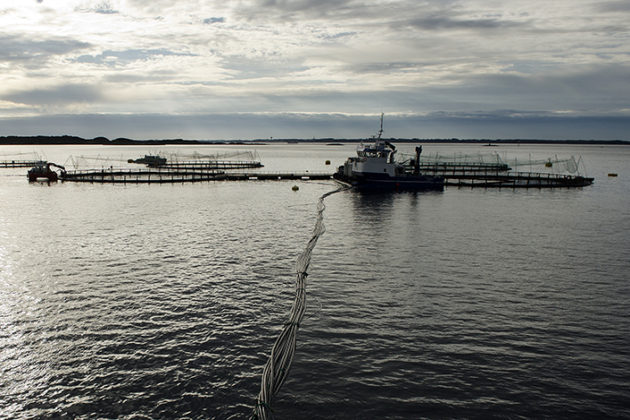Optimal feed reduced mortality

Research during natural outbreaks of the salmon diseases PD and HSMB shows that mortality can be halved through the optimum use of feed.
Pancreas Disease (PD) and Heart and Skeletal Muscle Inflammation (HSMB) are two of the most widespread and common diseases in the Norwegian salmon farming industry, and often occur simultaneously. According to estimates from the Institute of Marine Research, PD alone costs the Norwegian fish farming industry more than 1 billion NOK annually.
Nofima holds several R&D licences in collocation with commercial fish farmers along the Norwegian coast, whereof two are co-located with Blom Fiskeoppdrett at one site outside of Bergen. In the beginning of June 2015, a simultaneous infection of both PD and HSMB were detected at the site.
Researchers Jens-Erik Dessen and Kjell-Arne Rørvik noted that salmon that had been fed lean, protein-rich test feed had a mortality rate of 4 %. Salmon fed normal control feed with a higher fat content had a mortality rate of 9 %. The group fed the lean test feed also had higher feed intake and growth.

The statistical analysis also confirmed that there was lower mortality in large fish, and in fish that were less stressed during handling. Stress, the size of the fish and the diet explain 99% of the variation in acute mortality. Further research is needed in order to elucidate the specific mechanisms contributing to the positive effects on fish survival.
“Outbreaks of PD and HSMB have a tendency to occur during the spring and autumn. Therefore, diets with a relatively high protein/lipid ratio may be used not only during and after an outbreak, but also before, this might exert a beneficial effect in terms of maintaining growth and minimizing the mortality. At the same time the fish should be as large as possible before these critical periods” Dessen says.
The R&D licences Nofima holds with three Norwegian farming companies in the south, middle and north of Norway are an invaluable tool in order to carry out research that can benefit the industry.
Contact person
Research areas
Farmed fish
Research facilities
